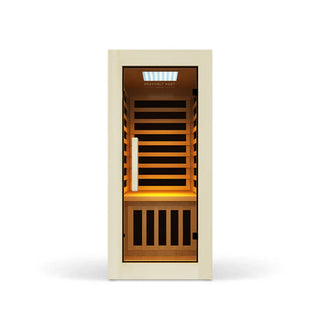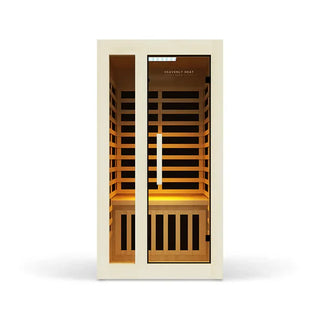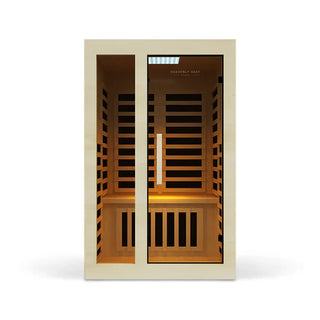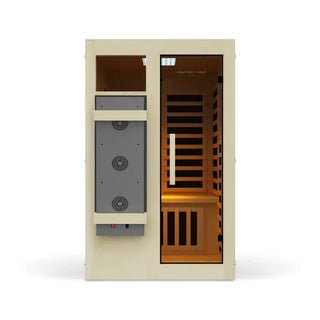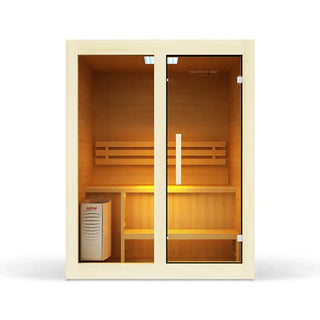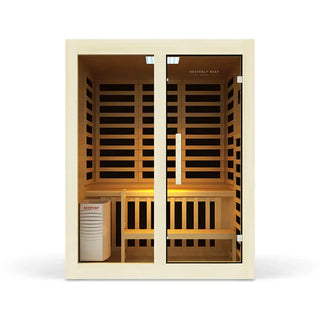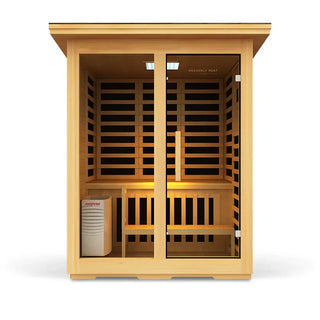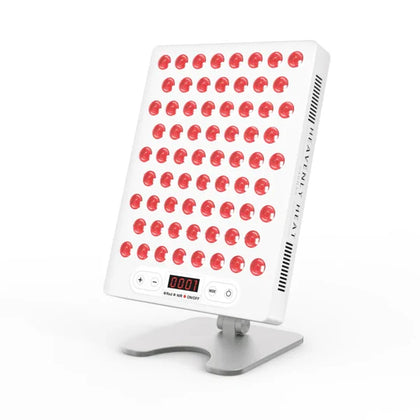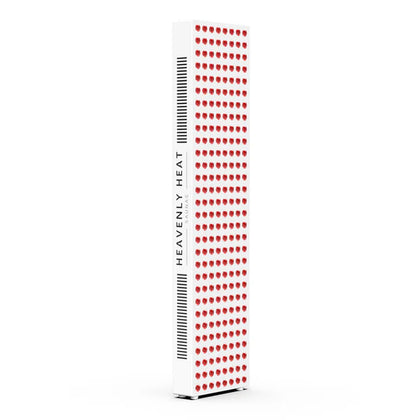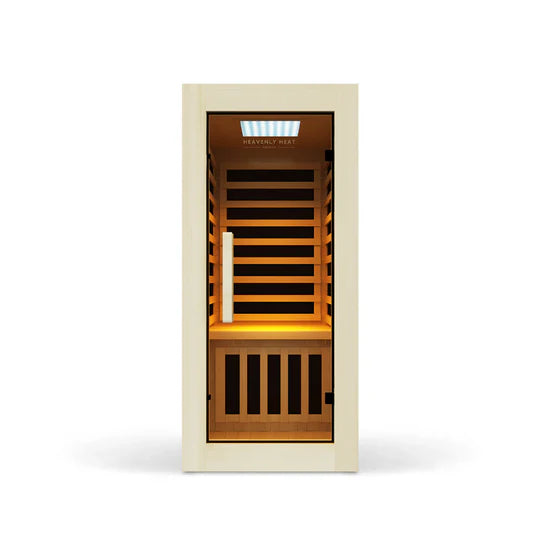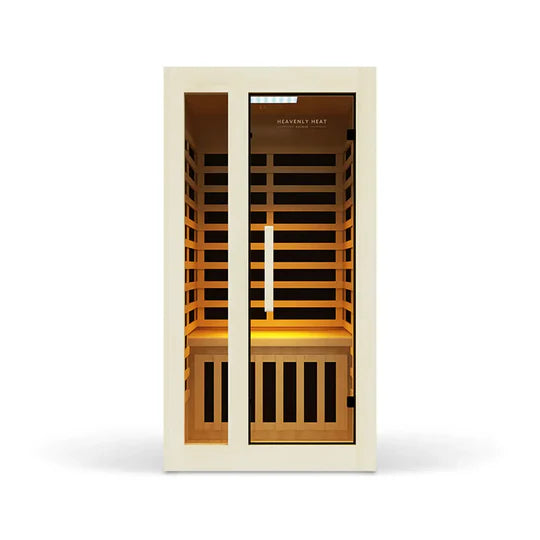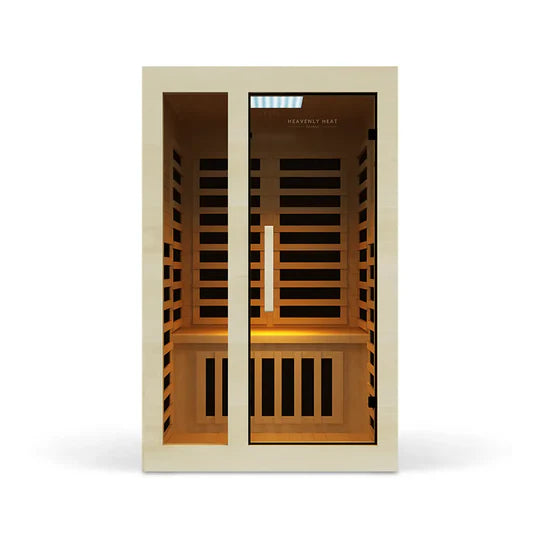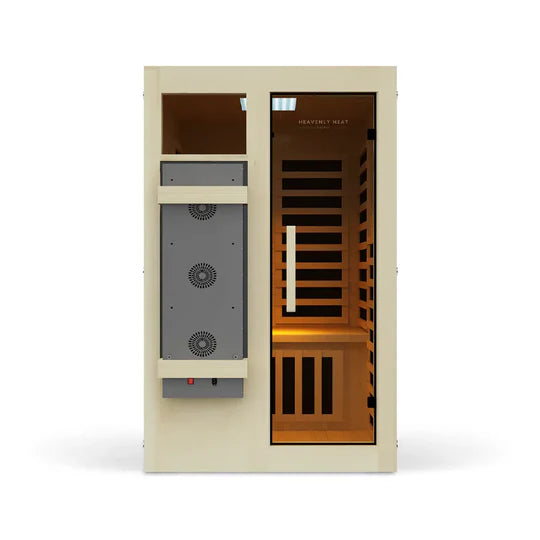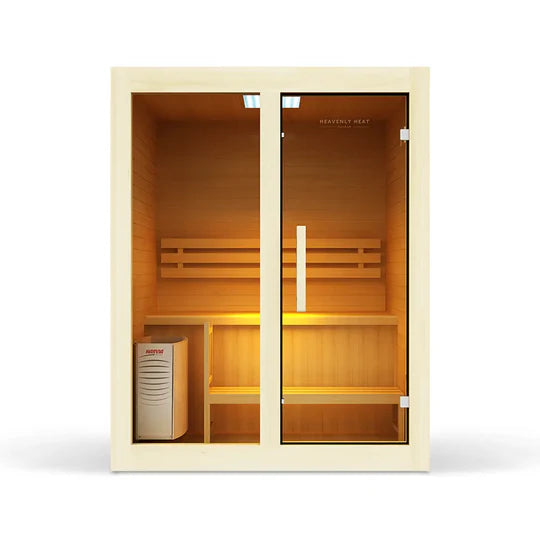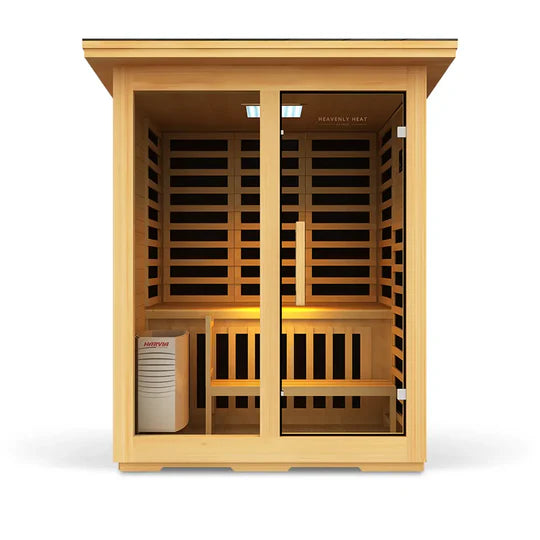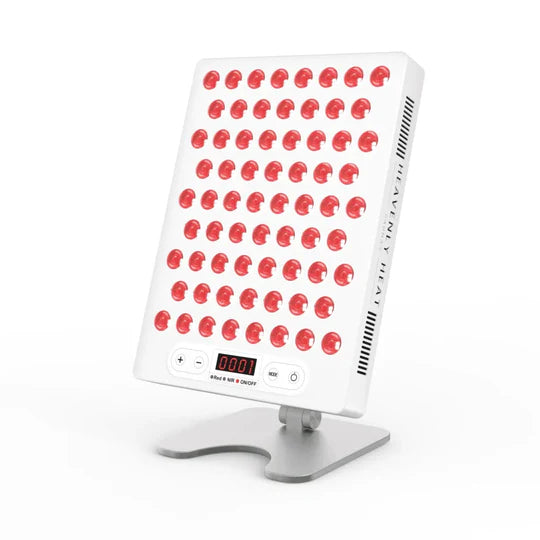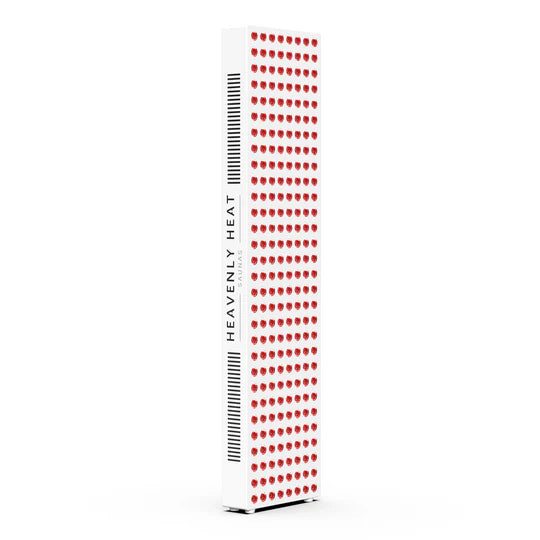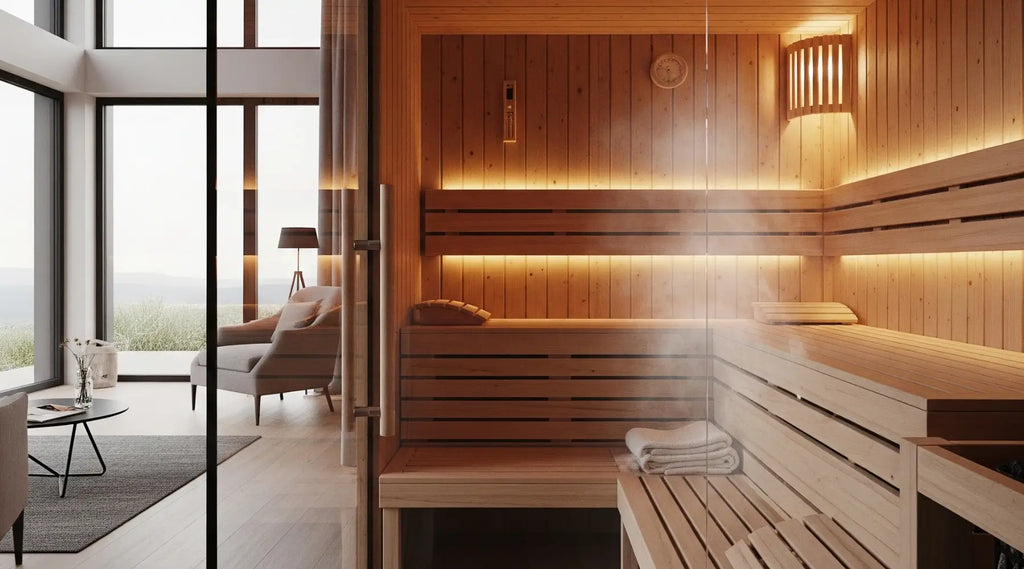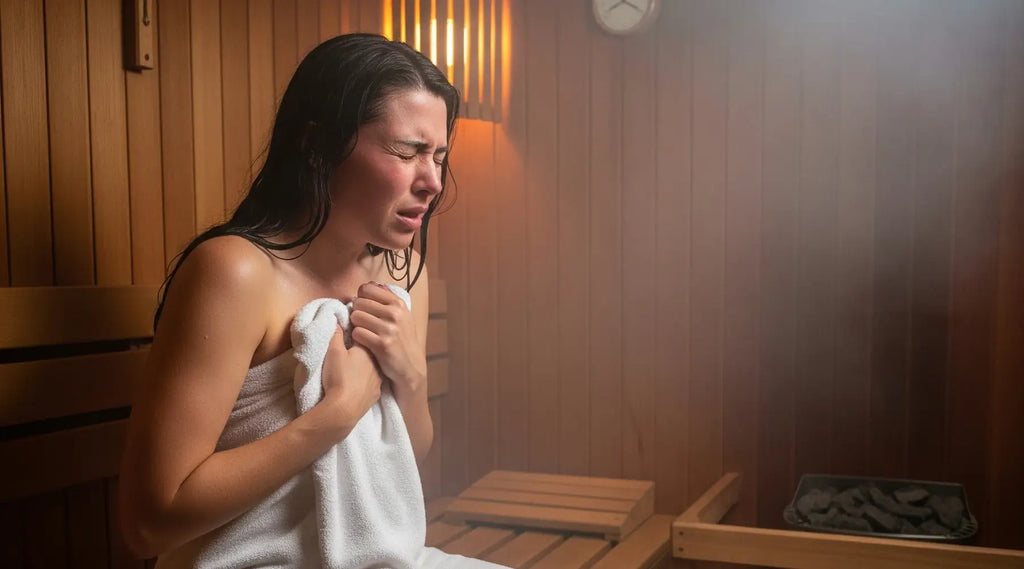Can You Put a Sauna in a Garage?

Thinking of installing a sauna in your garage? It’s a great way to create a private wellness space at home.
But before you start, there are important things to consider, like ventilation, insulation, and electrical setup.
Keep reading to learn everything you need to know for a safe, efficient, and enjoyable sauna experience.
Table of contents
Key Takeaways
Ensure proper ventilation in your garage to prevent moisture damage and mold growth.
Insulate the garage to maintain heat and improve energy efficiency for a more effective sauna experience.
Choose the right sauna type for your garage's temperature and space limitations.
Address electrical requirements, including proper wiring and circuit capacity, to safely power the sauna.
Properly prepare the garage floor with heat-resistant materials to avoid damage and make cleaning easier.
Is It Safe to Put a Sauna in a Garage?
- A poorly ventilated garage can turn into a moisture trap: Without good airflow, steam from the sauna builds up, leading to dampness and damage. Over time, this can hurt the structure of your garage.
- Not enough airflow can lead to mold and mildew: If your garage stays humid after using the sauna, mold and mildew can grow. That’s not just bad for your garage , it’s bad for your health too.
- Your garage’s wiring needs to handle the sauna’s power: Saunas use a lot of electricity, especially electric heaters. If your wiring isn’t strong enough, it can trip breakers or even become a fire risk.
- A badly installed sauna can be a fire hazard: Fire safety matters. Make sure the sauna is installed properly and safely. It’s not just about comfort ,it’s about protecting your home and your family.
Can a Sauna Work in a Cold or Unheated Garage?
Cold air can cause heat loss, making the sauna struggle to reach and maintain ideal temperatures. While a sauna can technically operate in a cold garage, the overall experience may be less comfortable.
Ideally, your garage should be at least 50°F (10°C) for the sauna to work effectively. To ensure that your sauna remains effective, consider insulating the garage to prevent heat loss and improve energy efficiency.
Attached vs. Detached Garage: Which Is Better for a Sauna?
Attached garage offers convenience and easier access to your home but may face temperature fluctuations , affecting your sauna experience.
A detached garage might be cooler in summer , making it more comfortable for sauna use, especially in hot weather.
However, it’s important to consider the climate in your area and your preferences for ease of access.
What Type of Sauna Works Best in a Garage?
- Infrared saunas work well because they don’t need the garage to be very hot: Infrared saunas heat your body directly using light, not the air around you. This makes them perfect for garages, especially in colder places, because they still work well without needing the whole room to get hot.
- Traditional saunas can be used in garages but need more setup: If you want that classic hot-air sauna feel, a traditional sauna can give it to you, but your garage might need extra insulation and heating so it works properly in cold weather.
- Prefab saunas are easy to install and don’t take much space: Panel-built or prefabricated saunas are a smart option for garages. They’re made to be easy to set up, fit into smaller spaces, and can even be moved later if you want.
- Pick your sauna based on space and what kind of experience you want: Whether you go for infrared or traditional, think about how much room you have and whether you prefer a quick warm-up or a full steam-style sauna experience. That’ll help you choose the right one for your garage.
What’s the Minimum Garage Size Needed for a Sauna?
- Sauna Size Depends on the Number of Users: The minimum garage space you need depends on the sauna size. A 2-person sauna requires at least 4x6 feet, while a 4-person sauna will generally need 6x6 feet or more. It's crucial to choose the right sauna size based on your available space.
- Ensure Proper Clearance for Ventilation and Safety: It's not just about the sauna's footprint. You’ll also need at least 18 inches of clearance on all sides. This ensures proper ventilation, keeps surrounding materials from overheating, and maintains safety in your garage setup.
What Are the Most Common Problems with Garage Sauna Installs?
Inadequate Ventilation and Airflow
- Stagnant Air Makes the Sauna Uncomfortable: Poor ventilation causes air to become stagnant, making the sauna feel stuffy and hard to heat.
- Wasted Energy and Uneven Temperature: Without proper airflow, the sauna can't keep a consistent temperature, wasting energy and reducing its efficiency.
- Equipment Strain and Potential Damage: Inadequate ventilation forces sauna equipment to work harder, leading to potential damage over time.
Electrical and Wiring Issues
- Overloaded Circuits Can Trip Breakers: Tripped breakers and unresponsive sauna heaters often happen due to overloaded circuits or poor wiring.
- Flickering Lights Indicate Wiring Problems: Flickering lights in the sauna could point to unstable electrical connections, which are common in garages with long wiring runs.
- Using the Wrong Wire Gauge Causes Issues: Incorrect wire gauge or type, especially in a sauna, can lead to problems, as high heat affects the wiring.
- Expert Wiring Selection is Crucial for Safety: Hiring a licensed electrician ensures the right wiring is chosen, which prevents overheating and reduces fire risks.
- Check Breakers and Connections to Fix Power Loss: If there’s a power issue, inspect the circuit breaker, tighten connections, and look for signs of wear or overheating.
- Fix Electrical Problems Early to Avoid Hazards: Catching and fixing electrical issues early can prevent costly repairs and avoid potential fire hazards.
Improper Insulation and Heat Loss
Without proper insulation , a garage sauna can struggle to maintain its heat , leading to longer heating times and higher energy consumption .
Heat loss not only reduces comfort but can make the sauna unsafe , as inconsistent temperatures can affect its therapeutic effects .
Insulation also plays a crucial role in keeping energy costs low . Proper insulation helps maintain a comfortable , efficient sauna environment .
Moisture Damage and Mold Growth
Moisture damage is a common issue when installing a sauna in a garage, often caused by poor ventilation and high humidity .
If not properly managed, this can lead to mold growth , damaging both the sauna’s interior and the garage.
Good airflow and humidity control are critical in preventing moisture buildup, which could cause long-term damage.
Poor Drainage and Water Flow Problems
- Water starts collecting on the floor when drainage is done poorly: When a garage sauna doesn’t have proper drainage, water can begin to pool on the floor. This standing water creates a mess and can slowly damage the flooring or nearby walls.
- Collected water can lead to mold and smell over time: If water sits too long without draining, it becomes a perfect place for mold to grow. That musty smell and damp feeling can quickly take over the sauna space.
- Water that doesn’t flow properly can mess with sauna heating: Poor drainage can also affect how well the sauna heats up. If water lingers on the floor, it can reduce the warmth and make the sauna feel less effective.
- Sloping the floor and using good pipes can fix the problem: To avoid all these water flow issues, the floor should be slightly sloped so water runs off naturally. Also, using strong, high-quality drainage pipes during installation makes a big difference in keeping the area dry and working properly.
Structural Integrity and Safety Concerns
- The garage floor needs to hold the sauna’s weight: Installing a sauna adds significant pressure to your garage floor. If the floor isn’t built to support that kind of load, it can crack or weaken over time, leading to costly repairs or even safety hazards.
- Moisture from the sauna can slowly damage your garage: Saunas create a humid environment, and if your garage isn’t protected, that moisture can seep into walls and floors. Over time, this can cause warping, mold, and structural decay that compromise the building’s strength.
- Too much heat can break down regular building materials: Garage structures aren't typically built to handle sauna-level heat. Without proper insulation and heat-resistant materials, the walls or ceiling might deteriorate or even become unsafe.
- Bad electrical work can lead to serious fire risks: Using the wrong wiring or having a poor installation can cause overheating and sparks. Saunas use a lot of power, so any shortcut here raises the chances of fire or electrical failure.
- Safety upgrades aren’t optional, they’re essential: To avoid long-term damage and accidents, it’s important to reinforce weak areas and follow strict safety rules. That includes things like better flooring, ventilation, fire protection, and professional installation.
Incorrect Sauna Sizing and Space Utilization
Choosing the correct sauna size is essential for both comfort and safety. An undersized sauna may not provide sufficient heat, while an oversized sauna may make the garage feel cramped.
Be sure to measure your available space and leave room for ventilation and easy access . Proper space utilization is key to ensuring the sauna fits comfortably while leaving enough space to move around and enjoy the sauna experience.
How to Prepare Your Garage for a Sauna the Right Way?
Choose the Right Location in Your Garage for Sauna Installation and Comfort
- Putting your sauna in the wrong spot can make your garage feel cramped: Choose a location in your garage that’s easy to reach but doesn’t block access to tools, storage, or walkways. The right placement helps keep your garage usable and your sauna experience hassle-free.
- Placing the sauna near a power source saves you extra work later: Most saunas need a dedicated electrical line. If you choose a spot close to an existing power source, you’ll avoid costly rewiring or complicated installations.
- Leaving space around the sauna helps it breathe and work safely: Your sauna needs airflow to function well. Keeping some space around it allows for better ventilation, prevents overheating, and makes the whole setup safer.
Ensure Proper Ventilation for Airflow, Freshness, and to Prevent Excess Moisture
- Let the air move to stop moisture problems: Good ventilation is crucial when installing a sauna in your garage. Without proper airflow, moisture from the sauna can build up, creating a damp environment that can lead to mold and mildew.
- Keep the air fresh so your sauna doesn’t feel stuffy: Ventilation helps regulate humidity levels, ensuring the space remains fresh and comfortable.
- Stop bad smells before they start with airflow: A well-ventilated sauna reduces the chance of musty odors and maintains good air quality.
- Add exhaust fans or vents to control dampness: Installing exhaust fans or vents will prevent moisture buildup and make the sauna experience more enjoyable.
Insulate the Garage Properly to Maintain Heat and Improve Energy Efficiency
- Without insulation, your sauna will lose heat quickly: Proper insulation is essential when installing a sauna in a garage. If you don’t insulate, the heat from your sauna will escape fast, making it harder and more expensive to keep the space warm.
- Insulated garages help saunas heat up faster and stay warm longer: When your garage is well-insulated, the sauna reaches its ideal temperature quicker and stays hot for longer periods. This means better comfort and lower energy use.
- The better the insulation, the more stable the heat stays inside: Insulation is rated by something called an R-value. The higher the R-value, the better it holds heat. For a garage sauna, using insulation with a high R-value keeps the temperature steady and efficient.
Prepare the Flooring with Heat-Resistant Materials for Durability and Easy Cleaning
Choosing the right flooring material is crucial for a sauna in a garage. Heat-resistant flooring can withstand the high temperatures typically found in a sauna.
Materials like tile, stone, or concrete are ideal choices for their durability and resistance to heat . They also make cleaning easier , which is especially important in a sauna where sweat and moisture are common. The right flooring will make your sauna both functional and visually appealing .
Check Electrical Requirements to Safely Support Your Sauna Heater and Equipment
- Your garage needs a 240V line to handle the sauna’s power: Before you bring a sauna into your garage, make sure the electrical system can handle it. A standard outlet won’t cut it, most sauna heaters need a 240-volt circuit to work properly and heat up efficiently.
- Bigger saunas need more amps to run safely: Depending on how large your sauna is, it might need a circuit that supports anywhere from 30 to 60 amps. Using the right amperage helps your sauna run without overloading your system or tripping breakers.
- Only a licensed electrician should set up the wiring: Installing high-power circuits isn’t a DIY job. A licensed electrician ensures the wiring is safe, meets local codes, and prevents dangerous electrical issues down the line.
Consider Moisture and Humidity Control to Prevent Mold, Mildew, and Damage
Humidity control is one of the most important aspects of setting up a sauna in your garage. The high heat and moisture from the sauna can cause mold, mildew, and other damage if not properly managed.
Installing a vapor barrier, such as polyethylene or foil-backed materials, reduces moisture movement, preventing damage. It’s also important to maintain good airflow to prevent excessive humidity buildup.

Why Are More Homeowners Installing Saunas in Garages?
- Affordable and Easy Installation in the Garage: Homeowners are increasingly installing saunas in their garages because it’s an affordable and easy option compared to setting one up in other parts of the home.
- Increasing Property Value with a Garage Sauna: A sauna in the garage not only promotes wellness but can also increase the value of your property by making it more attractive to potential buyers looking for healthy lifestyle features.
- Health Benefits and Relaxation at Home: Having a sauna in the garage helps with relaxation, stress relief, and better sleep, making it a great way to improve your overall well-being without leaving home.
- Muscle Recovery and Fitness Support: Saunas aid in muscle recovery, detoxification, and improved circulation, making them a helpful tool for anyone focused on fitness or recovery after exercise.
- Cold Showers Enhance Sauna Benefits: Pairing a sauna with a cold shower helps boost recovery by improving circulation and providing a refreshing cooldown after sauna sessions.
FAQs
What Kind of Electrical Wiring Is Required for a Garage Sauna?
When installing a sauna in your garage, the right electrical setup is crucial. You’ll need 240V wiring for most saunas, especially if you’re installing a larger or traditional model. A dedicated 30-60 amp circuit is required to safely supply the sauna, depending on its size. Proper grounding is also essential to prevent electrical hazards.
Can You Use a Garage Sauna Year-Round, or Is It Too Cold in Winter?
Yes, you can use a sauna in a cold garage year-round. However, it’s important to insulate the garage to trap heat and improve efficiency. Insulation is key if you want to use the sauna during the winter months.
How Do You Handle Humidity and Condensation in a Garage Sauna?
To manage humidity, ensure proper ventilation, installing a vent fan helps circulate air and reduce moisture buildup. You should also install a vapor barrier to prevent moisture from seeping into the garage. Regularly check for water pooling and clean to prevent mold.
Is There a Risk of Fire When Installing a Sauna in a Garage?
The risk of fire exists due to the high heat inside a sauna, but with proper installation and ventilation, these risks can be minimized. Always ensure proper airflow, avoid overheating, and have an electrician handle the wiring to prevent electrical issues.


